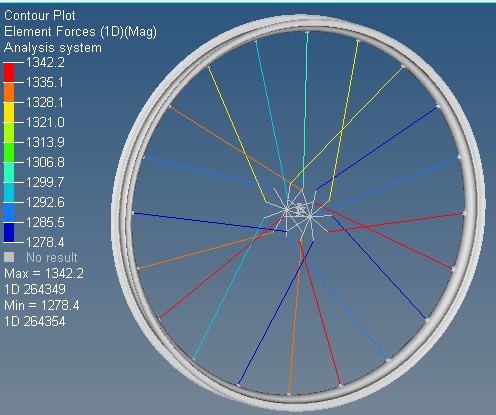Hello guys,
I'm modeling a wire rim with steel spokes and a composite ring with HW 14. Since the spokes (PROD elements) are under tension before any load is applied I use the pretension function with ADJUSTMENT. Goal is to get the spoke forces in a range of 1200 N +/15N and an even displacement around the rim.
Pretension with FORCE is not a solution, the forces of the spokes are almost equal but the ring is moving and the wheel gets eccentric. Also, I would need to use PBAR elements because the model would collapse.
Now my question, is it possible to do the linear pretension loadstep in steps without changing it to a non-linear-quasi-static loadstep? I stay way under the yield strength of 600 Mpa.
Thx a lot,
Felix
<?xml version="1.0" encoding="UTF-8"?>